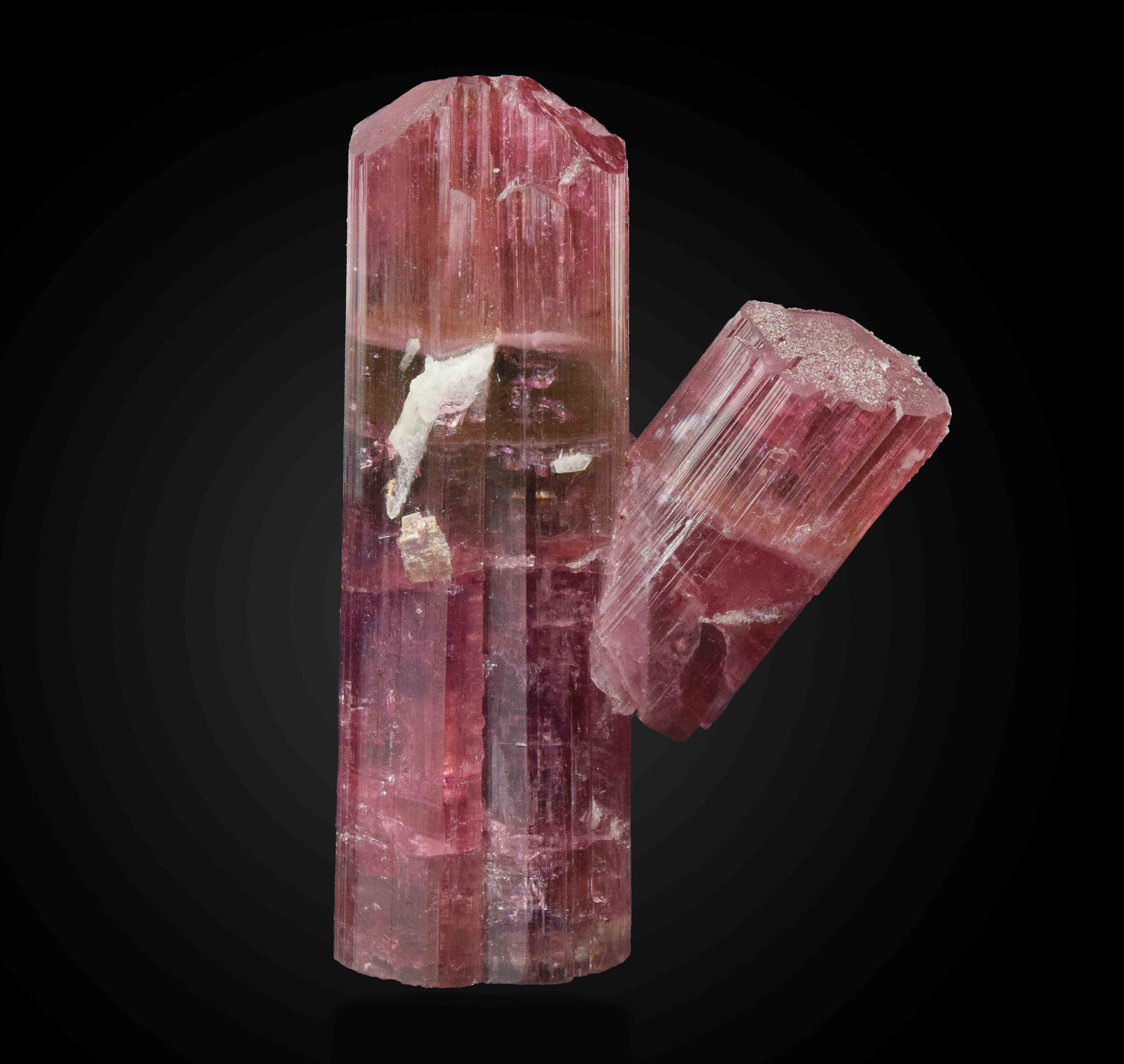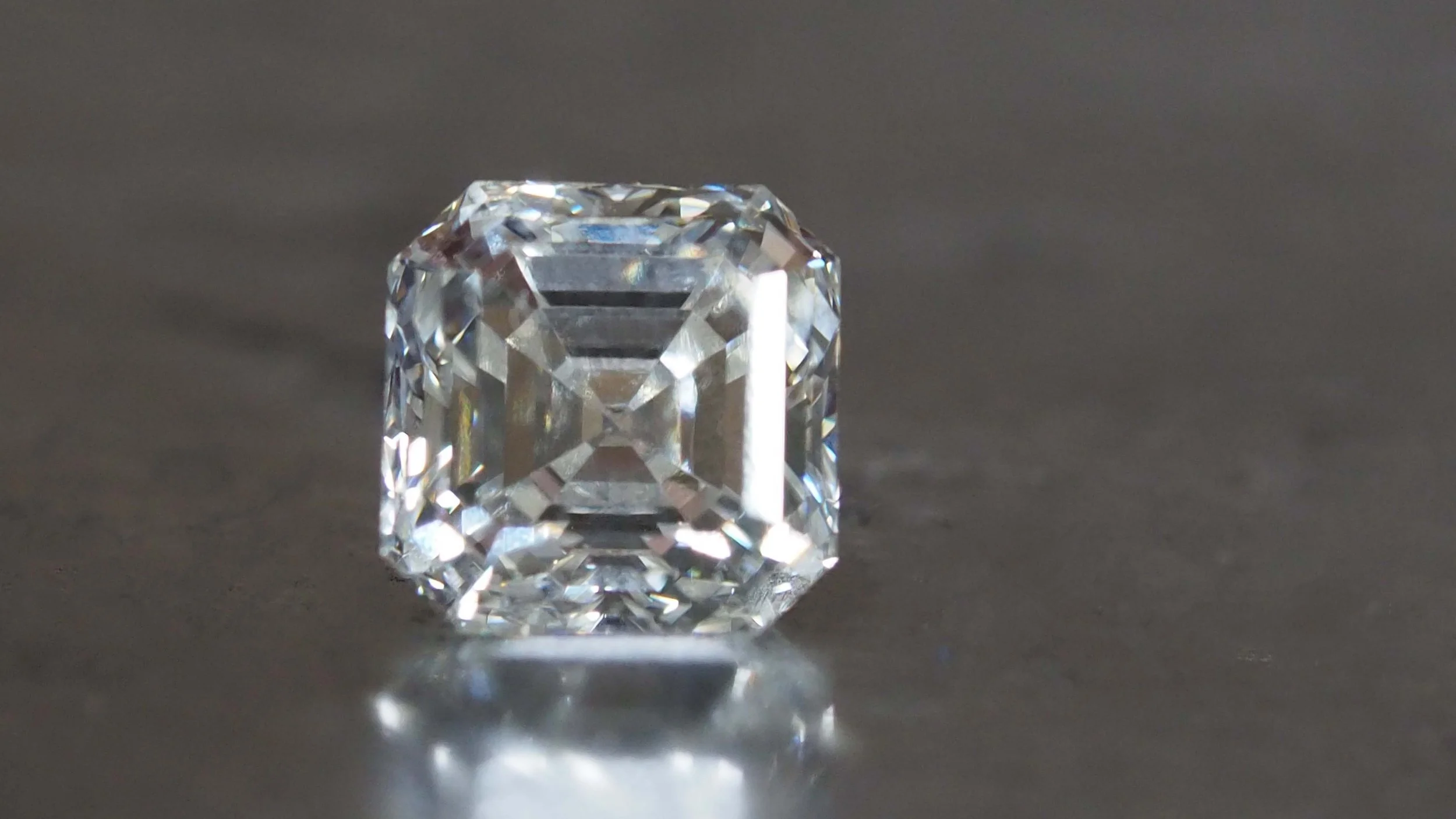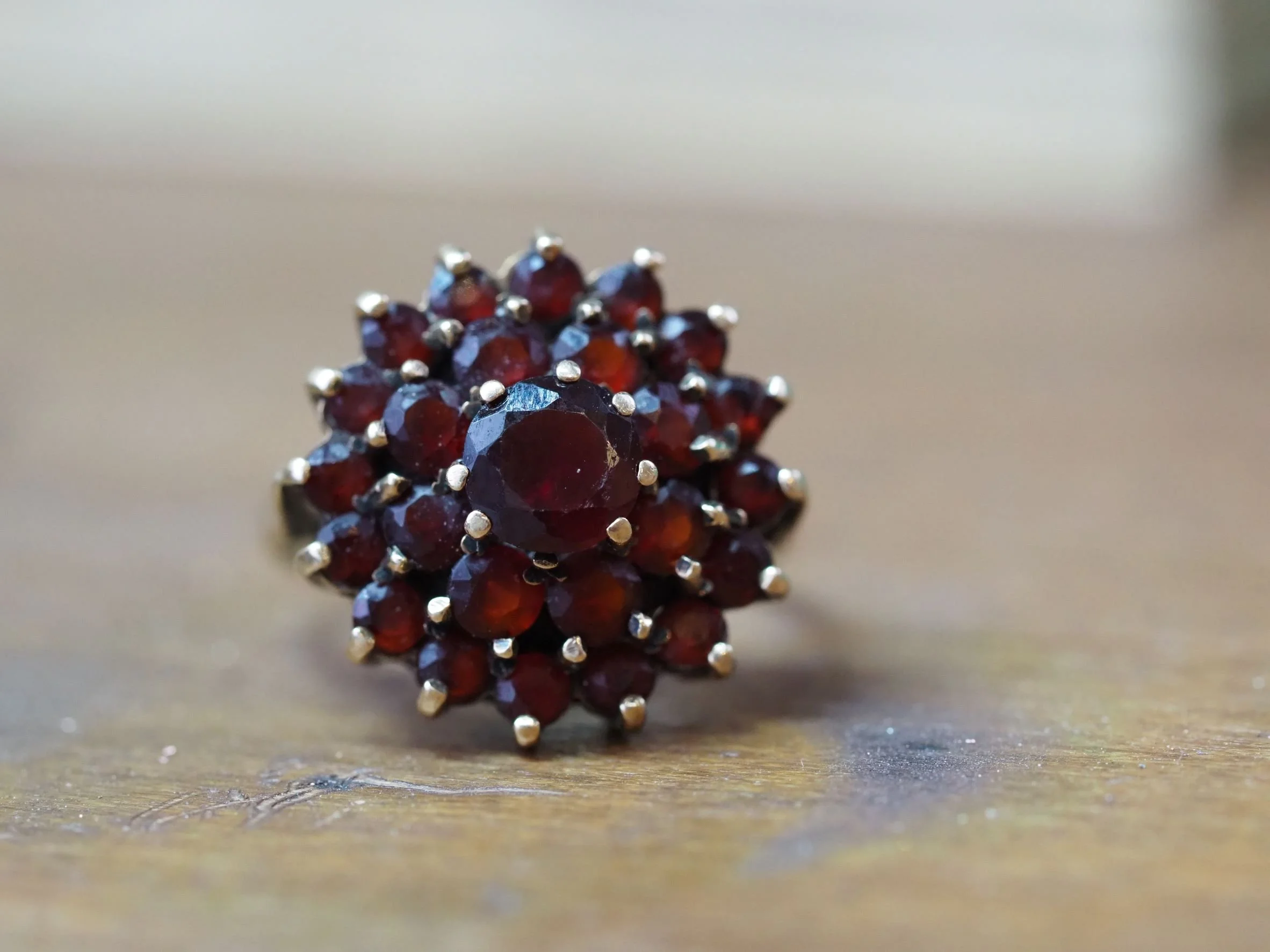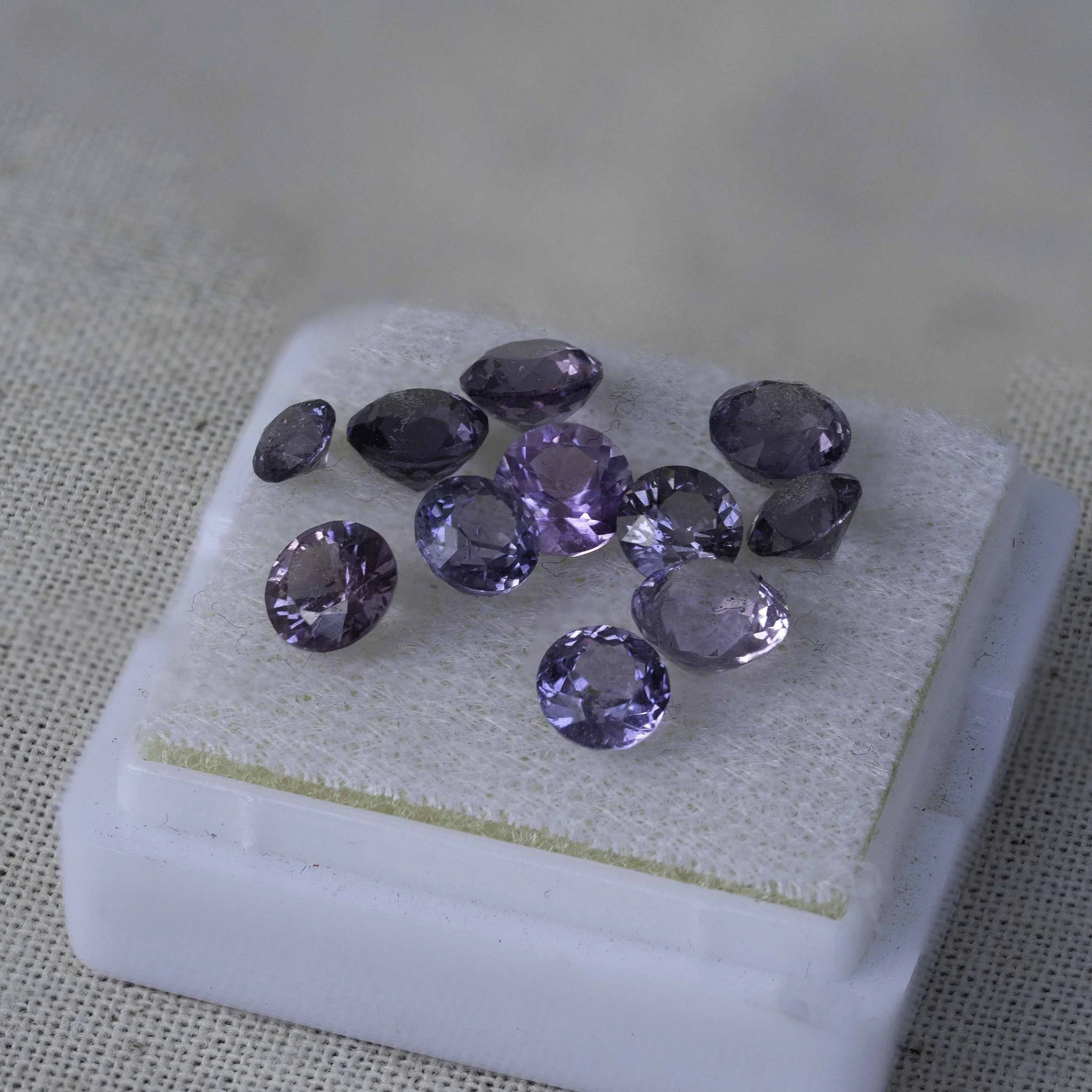Mohs scale
A rough Pink Tourmaline (7-7.5) rystal from Brazil
The Mohs scale of mineral hardness
The Mohs scale of mineral hardness was created in 1812 by German geologist Freidrich Mohs and it helps us to identify different types of minerals and gemstones to this day.
The scale is still used today and is fairly basic; it simply involves using one stone to scratch another and using the results as an indication of which stone is harder. For example, if you scrape one stone across another and it causes a scratch then the stone you scratched with is harder.
Diamonds are a 10 on the mohs scale, makig them perfect for engagement rings that are worn everyday.
Hardness is only one tool that gemologists use to identify a stone. The stone’s colour, size, and various other factors will help to identify it.
There are kits available that have an example of each of the minerals listed on the scale below. These can be bought and used to help identify minerals that are found in the field.
Below is the Mohs scale, going from softest to hardest.
1 -Talc
2 -Gypsum
3 -Calcite
4 - Fluorite
5 - Apatite
6 - Orthoclase feldspar
7 - Quartz
6.5 - 7.5 - Garnet
7.5/8 - Beryl (Emeralds and Morganite)
8 - Topaz
9 - Corundum (ruby and sapphire)
10 - Diamond
The Mohs scale is an ordinance scale. This means that it does not reflect how hard the materials are in relation to each other, just that one is harder than the other and will create a visible scratch.
For example, diamond, the hardest natural material on earth, is a 10 on the scale, however, it is 4 times harder than corundum, which is at 9.
Mohs scale v Absoloute mineral hardness
Since the Mohs scale was created in 1812, many other far more high tech ways to identify gemstones and minerals have been introduced. However, the Mohs scale remains an important tool to identify gemstones and, in the jewellery trade, it helps us to identify stones that are suitable to use in jewellery.
Diamonds are so popular in engagement rings because they are so hard (and, of course, they sparkle). This means that they can stand up to the wear and tear that items of jewellery, specifically those that are worn every day, are subjected to.
Gemstones that are less than a 9 on the scale will show signs of wear, like scratches, if they are worn continuously and stones that measure less than 7 should not be worn in rings that will be worn frequently as a rule.
A Peridot (6.5-7) aft6er many wears of wear.
Garnets 6.5 - 7.5
The image above shows a Peridot, a gemstone that measures 6.5 - 7 on the scale, which was removed from a ring that was worn over the course of 70 years. You can see the damage that this stone has sustained from years of wear in a ring.
Gemstones that show signs of wear like this can be recut and polished, however, this process does reduce the overall carat weight of the stone.
Gemstones like peridots are better suited for wear in items such as earrings, necklaces, brooches, and hairpins, items of jewellery that do not come into contact with hard surfaces frequently.
When storing jewellery, it is important to separate items that contain gemstones of different hardness, especially if these items are being transported. For example, diamonds and pearls, the latter of which measure 3-4 on the scale, should never be stored together.
Amethsyt is a variety of Quartz which measures 7 on the scale
What is the softest gemstone?
Amber, at 2 on the scale, is the softest gemstones that is regularly used in jewellery.
Industrial diamonds
It is diamond's hardness that makes them valuable as an industrial tool as well as a gemstone. Diamonds are used in many applications because their hardness makes them ideal for cutting. Many drills and saw blades are tipped with diamonds to help them cut through other hard materials like rocks. The diamonds used in industry will not have the same visual properties as gem-quality stones however they are just as hard.
All diamonds are cut using other diamonds, as no other materials would be able to cut them.
Other minerals on the scale are used in industry as well; corundum is often used as an abrasive in products like sandpaper, quartz crystals are used in watches, and gypsum is used in building products like drywall.
Purple Spinel, which measure 8 on the Mohs scale






